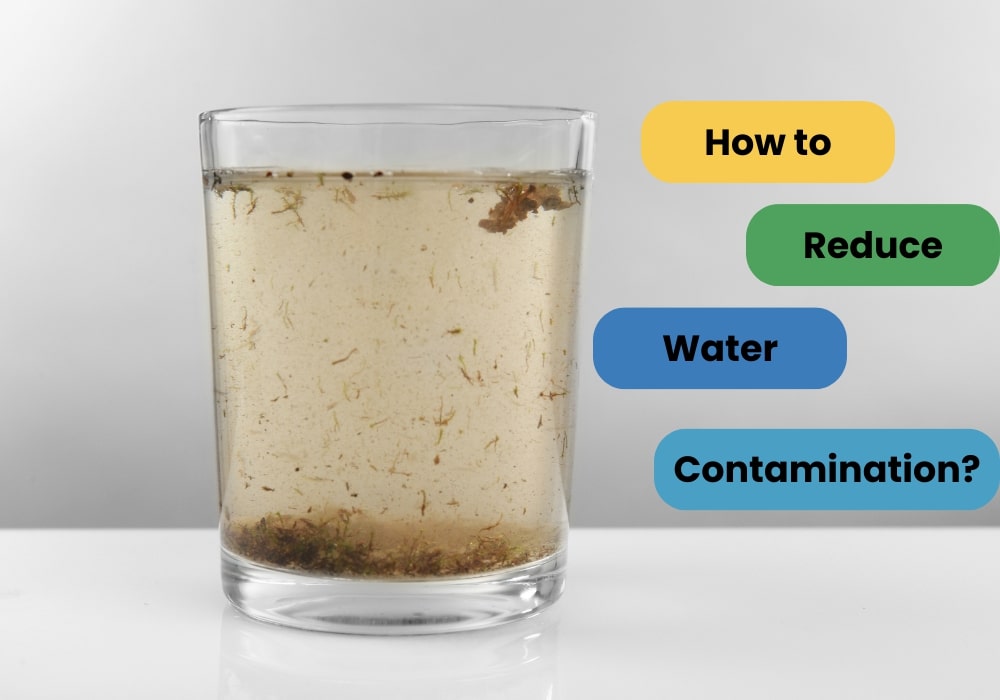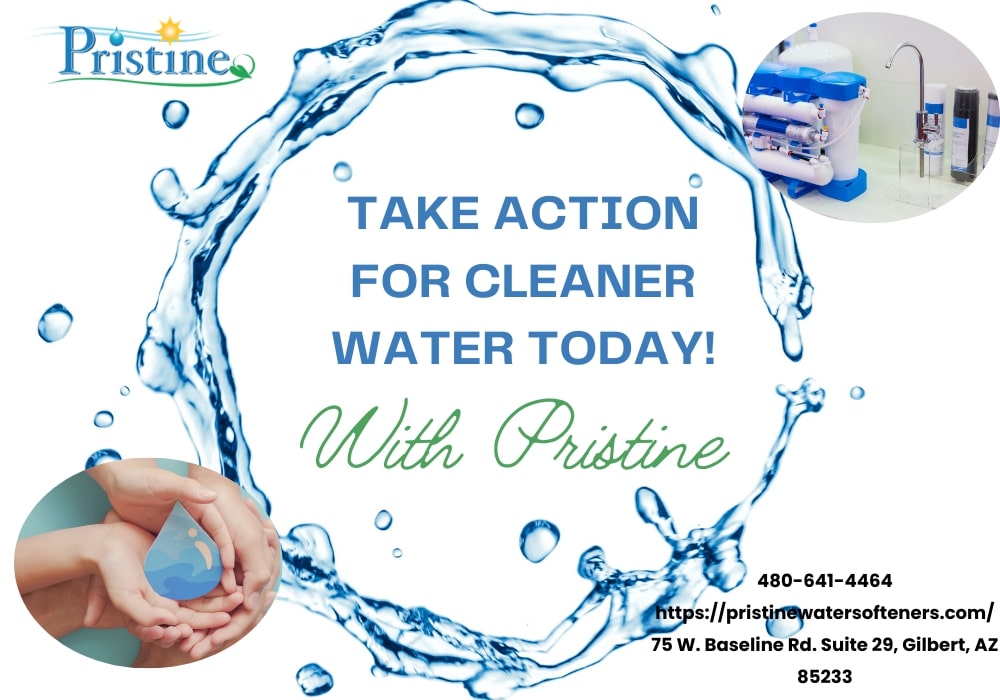Water is one of our planet’s most valuable resources, but pollution seriously threatens it. Whether it’s the oceans, rivers, lakes, or even our drinking water, contamination is a critical issue that demands urgent attention.
The real question is, how to solve water pollution effectively and sustainably? In this article, we will explore what are two ways to solve a water pollution problem, along with a range of other strategies and solutions that can make a real difference.
What Are Two Ways To Solve A Water Pollution Problem?
Water pollution occurs when harmful substances, like toxic chemicals and waste materials, infiltrate our water bodies. These pollutants contaminate rivers, lakes, oceans, and even underground water sources, posing severe threats to human health, aquatic life, and the environment. Environment water pollution has harmful effects on both human health and the environment, making clean water essential for maintaining a healthy ocean ecosystem. Understanding how to solve water pollution begins with knowing the causes and impacts.
Common Causes Of Water Pollution
Industrial Waste And Harmful Chemicals
One primary source of pollution is industrial waste. Factories and plants discharge harmful chemicals, including heavy metals and toxic substances, directly into rivers and oceans.
Addressing what are two ways to solve a water pollution problem often starts with regulating these harmful industrial activities. Agriculture plays a significant role in water contamination. Fertilizers, pesticides, and other chemicals used in farming often wash away into nearby streams and lakes. Learning how to solve water pollution in agriculture involves controlling runoff and adopting sustainable farming practices.
Urban Development Sewage And Medical And Chemical Waste
Urban areas contribute massively to water pollution through untreated sewage, household chemicals, and medical waste.
Storm drains play a crucial role in managing urban runoff by funneling stormwater, which collects pollutants from surfaces like sidewalks and streets, into drainage systems, thereby preventing these pollutants from entering rivers, streams, and oceans.
Implementing better wastewater management systems and raising awareness about the dangers of improperly disposing of radioactive waste are big parts of answering the question of how to solve a water pollution problem.
The Impact Of Water Pollution On Human Health And Aquatic Life
The effects of contaminated water on human health are alarming, leading to diseases such as cholera, diarrhea, and even long-term conditions.
Furthermore, pollutants severely damage aquatic ecosystems, disrupting their balance. Knowing how to solve water pollution is crucial for protecting human lives and preserving aquatic life.
What Are Two Ways To Solve A Water Pollution Problem?
Two fundamental approaches stand out when discussing two ways to solve a water pollution problem: conserving water and reducing pollution sources.
Water Conservation And Efficient Usage
Water conservation is one of the simplest but most effective methods. For instance, installing a water-efficient toilet and practicing responsible water use at home can make a significant impact. People often ask, “What are two ways to solve a water pollution problem?” Well, starting with water conservation is an excellent answer.
Planting Trees And Green Agriculture Practices
Planting trees is beneficial for the air and a vital tool for reducing water pollution. Trees naturally absorb pollutants from runoff, preventing them from entering water bodies. Green agriculture, which limits harmful pesticides and fertilizers, is another solution when people wonder how to solve water pollution at its roots.
Effective Methods To Reduce Water Pollution
Beyond the basics, many other strategies exist for tackling water contamination. Here’s a breakdown of how to address and solve water pollution comprehensively.
Proper Waste Disposal
Flushing non-biodegradable items like plastic bottles, wet wipes, and oil down the drain directly contributes to water pollution. Educating people on the two ways to solve a water pollution problem can be as simple as encouraging proper waste disposal.
Phosphate-Free Laundry Detergents And Solid Waste Management
Phosphates in laundry detergents harm water quality, causing algae blooms that deplete oxygen levels. These blooms can lead to low dissolved oxygen levels, negatively impacting aquatic ecosystems. Switching to phosphate-free detergents and implementing solid waste management are essential to solving water pollution.
Septic Tanks And Reverse Osmosis Treatment
Wastewater treatment facilities are critical in reducing contamination. Septic tanks and sewage lines, for example, degrade solids and prevent them from seeping into the environment. Advanced methods like reverse osmosis also help solve water pollution by removing even minute pollutants.
Preventing Agricultural Runoff And Livestock Production Waste
One of the most challenging sources of water pollution solutions is agricultural runoff. Farmers can mitigate this by managing nitrogen and phosphorus levels in fertilizers. When asked, “what are two ways to solve a water pollution problem in agriculture?” efficient fertilizer management and buffer zones are often recommended.
Innovative Solutions To Solve Water Pollution
With technological advancements, innovative methods are emerging that offer promising results in solving water pollution.
Advanced Filtration And Ozone Wastewater Treatment
One modern answer to solving water pollution lies in advanced filtration techniques and ozone wastewater treatment. These methods break down complex chemicals, ensuring they don’t contaminate our water sources.
Natural biological processes are being harnessed to treat water more effectively. Coupled with sand filtration, these techniques remove harmful pollutants, making them a critical part of the biological process of addressing what are two ways to solve a water pollution problem through sustainable means.
Intelligent sensors for measuring water quality are revolutionizing how we handle contamination. Regularly testing water quality is a fundamental step in learning how to solve water pollution before it escalates to areal timetables.
How Individuals Can Contribute To Solving Water Pollution
Everyone can play a role in reducing water pollution. Understanding what are two ways to solve a water pollution problem on a personal level is vital for creating lasting change.
Reporting Water Polluters And Harmful Substances
If you witness someone polluting water, report it to the authorities. It’s a simple but powerful way to answer how to solve water pollution at a community level. Water cannot be cleaned efficiently in wastewater facilities or a septic tank when things get blocked.
Reducing Plastic Waste And Recycling
One of the most significant contributors to water pollution is plastic waste. Reducing plastic use and recycling can dramatically conserve water and lower the risk of water contamination, making it a straightforward answer to what are two ways to solve a water pollution problem.
Avoiding Harmful Household Products And Chemical Waste Disposal
Choosing eco-friendly products and disposing of household chemicals properly are practical solutions. These small actions form the foundation for solving water pollution in everyday life.
Government And Policy Initiatives
Government regulations, particularly those from organizations like the Environmental Protection Agency (EPA), are crucial in managing water quality.
Supporting these policies and pushing for stricter regulations is critical to solving water pollution at a national level. Government regulations play a vital role in managing environment water pollution, protecting both human health and the environment.
Advocacy for clean water laws and participation in community actions can drive large-scale improvements in environmental water pollution. When you consider the two ways to solve a water pollution problem on a societal level, public support and community initiatives are essential.
How To Solve Water Pollution Through Better Urban Planning
Urban areas significantly contribute to water pollution, primarily through stormwater runoff, untreated sewage, and improper disposal of hazardous materials. Implementing better urban planning strategies is one effective way to address water pollution.
This includes creating green infrastructure, such as permeable pavements, rain gardens, and green roofs, which help absorb and filter rainwater before it enters storm drains. Proper stormwater management not only reduces the volume of polluted water entering water bodies but also replenishes groundwater levels.
Moreover, urban planning can incorporate systems to separate sewage and stormwater drains. In many cities, combined sewer systems overflow during heavy rains, releasing untreated sewage directly into rivers and lakes.
Upgrading these systems can be costly but is necessary to significantly reduce urban water pollution. Key parts of urban water management solutions include educating residents on the importance of not dumping harmful chemicals down storm drains and encouraging responsible waste disposal.
The Role Of Public Awareness Campaigns In Reducing Water Pollution
Public awareness is crucial when tackling water pollution. Many people are unaware of how their daily activities contribute to water contamination. Public campaigns focusing on reducing single-use plastics, promoting water conservation, and educating about proper waste disposal can bring about significant behavioral changes. Social media, community events, and educational programs can effectively spread this awareness.
Additionally, schools can incorporate environmental education into their curriculums, teaching students from a young age about the importance of protecting water resources. Local governments and environmental organizations can collaborate to create engaging materials and events that encourage community involvement.
When people understand that there are two ways to solve a water pollution problem, such as reducing plastic waste and conserving water, they are more likely to adopt environmentally friendly habits.
While often viewed as separate issues, climate change and water pollution are closely linked. Rising temperatures, changing rainfall patterns, and more frequent extreme weather events all contribute to the increasing challenge of managing water quality.
For instance, heavy rains can lead to more runoff carrying harmful pollutants into rivers and lakes, while droughts can concentrate existing contaminants, making water even more toxic.
Addressing water pollution in the context of climate change requires a holistic approach. This includes reducing emissions and adapting water management strategies to be more resilient to changing climate conditions.
Investments in infrastructure that can withstand extreme weather events, such as flood barriers and enhanced drainage systems, are essential. Moreover, restoring wetlands and other natural buffers can help mitigate the effects of climate change and water pollution by filtering pollutants and providing flood control.
Solving water pollution requires a multi-faceted approach, from individual actions to government regulations. Understanding and expanding on the two ways to solve a water pollution problem. with more advanced methods, we can work towards a future where clean water is available. Remember, the solution to how to solve water pollution lies in both simple daily habits and systemic change.
FAQs
What Are The Most Common Types Of Water Pollution?
The most common types include industrial, agricultural runoff, and plastic waste.
How Can I Measure Water Quality At Home?
To check for contaminants and ensure safe water, you can use simple test kits or more advanced water treatment sensors.
Why Is Water Conservation Important?
Water is a limited resource, and conserving it reduces the load on treatment facilities, which helps prevent contamination.
How Does Agricultural Runoff Affect Water Bodies?
Agricultural runoff introduces pesticides, nitrogen, and phosphorus into rivers and lakes, causing severe ecological damage.
Take Action For Cleaner Water Today With Pristine Water Softeners!
Protecting our water resources is a shared responsibility, and it starts with making smarter choices for your home and the environment. Whether you’re looking to improve the water quality in your household or take steps toward reducing pollution, Pristine Water Softeners is here to help. Our advanced water treatment solutions not only provide you with cleaner, healthier water but also contribute to reducing the harmful contaminants that affect our environment.
Don’t wait until water pollution becomes an even bigger problem—act now! Explore our range of eco-friendly water softeners and filtration systems designed to make a positive impact. By choosing Pristine, you’re not just investing in better water for your home; you’re taking a stand for a cleaner, safer planet. Visit our website today to discover how our solutions can make a difference for you and your community.



